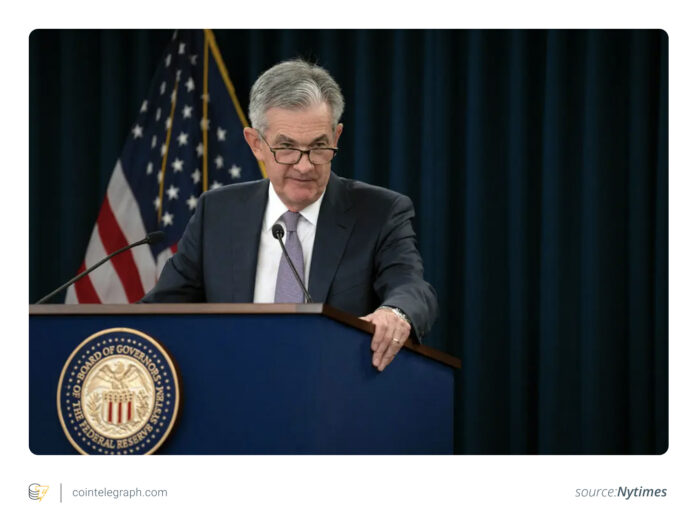Introduction to the Federal Reserve’s Interest Rate Decision
The Federal Reserve’s upcoming meeting on December 9th and 10th has significant implications for the financial markets, including bonds, stocks, and cryptocurrencies. The key question on everyone’s mind is whether the Fed will cut interest rates again before Christmas, which could have a ripple effect across various financial sectors. In this article, we will explore the background to a potential rate cut, the factors supporting and opposing it, and the possible consequences for cryptocurrencies and other financial markets.
The Background to a Rate Cut in December
Central banks typically cut interest rates when inflation eases, economic growth slows, or financing conditions become too tight. The Federal Reserve has already cut interest rates twice this year, with the latest cut in October setting the target range for federal funds at 3.75% to 4.00%. This move was made amid clear signs of a slowdown in the labor market, with October seeing one of the worst monthly layoffs in over two decades. The Fed’s October statement reflected this trend, noting that risks to employment had increased, although inflation remained somewhat elevated.
Factors Supporting a Possible Rate Cut
There are several reasons why the Fed might decide to cut rates, including a cooling job market, moderation of inflation, the end of quantitative tightening, and the timing before the holidays. Private sector data shows lower hiring, rising layoffs, and a slight increase in unemployment, which could justify further easing. Additionally, inflation is still above target but trending lower, giving the Fed more room to ease monetary policy. The end of quantitative tightening and the need to meet year-end liquidity needs could also support a rate cut.
-
Cooling job market: Private sector data shows lower hiring, rising layoffs, and a slight increase in unemployment.
-
Moderation of Inflation: Inflation is still above target but trending lower, giving the Fed more room to ease monetary policy.
-
End of quantitative tightening: The Fed has announced that it will stop reducing its balance sheet starting December 1st.
-
Timing before the holidays: A rate cut would be guided by year-end liquidity needs and help set expectations for 2026.
Arguments for the Fed to Postpone Action
Several factors suggest the Fed could delay a rate cut in the near future, including sticky inflation, a data vacuum due to the government shutdown, a divided committee, and limited scope for relaxation. According to the Fed’s latest statement, inflation remains “somewhat elevated,” which could limit the room for further easing. The government shutdown in the US has also delayed key employment and inflation reports, complicating policy assessments. Additionally, Federal Reserve officials disagree about the right path forward, encouraging a more cautious approach.
-
Sticky Inflation: According to the Fed’s latest statement, inflation remains “somewhat elevated.”
-
Data vacuum: The government shutdown in the US delayed key employment and inflation reports, complicating policy assessments.
-
Committee department: Federal Reserve officials disagree about the right path forward, encouraging a more cautious approach.
-
Limited scope for relaxation: After several cuts this year, some analysts argue that policy is already approaching neutral levels.
What to Monitor Before December
Several factors are likely to influence the Fed’s upcoming policy decision to cut interest rates, including non-agricultural payroll and unemployment, inflation data, financial conditions and market signals, Fed announcements, and external shocks. Investors should keep an eye on these factors to gauge the likelihood of a rate cut and its potential impact on the financial markets.
-
Non-agricultural payroll and unemployment: Is the job market continuing to slow?
-
Inflation data: Any unexpected rise in inflation will reduce expectations of monetary easing.
-
Financial Conditions and Market Signals: Are credit spreads widening and overall market liquidity becoming tighter?
-
Fed announcements: Disagreements within the Federal Open Market Committee (FOMC) could affect the outcome.
-
External shocks: Trade developments, geopolitical risks or sudden supply disruptions could change the Fed’s approach.
How a Federal Reserve Cut Could Affect Cryptocurrencies
A Fed interest rate cut could increase global liquidity and push investors toward riskier assets like cryptocurrencies in search of higher returns. Bitcoin (BTC) and Ether (ETH) tend to benefit from stronger risk appetite and increasing institutional inflows. Lower lending rates for decentralized finance (DeFi) could also encourage more leverage and trading activity. However, if a rate cut is interpreted as a signal of a recession, cryptocurrencies may experience stock-like volatility.
Consequences of a Fed Interest Rate Cut for Other Financial Sectors
A Fed interest rate cut could have significant implications for other financial sectors, including bonds, stocks, and currencies. Short-term bond yields are likely to fall, while the yield curve could steepen if long-term yields remain more stable than short-term ones. A rate cut could also weaken the US dollar, supporting emerging markets and commodity exporting countries. Additionally, a rate cut could spark a rally in US stocks if investors see it as a sign of confidence in a soft landing.
-
Bonds and returns: Short-term returns are likely to fall as markets adjust their expectations.
-
US Dollar and Global Currencies: A rate cut generally weakens the dollar as interest rate differentials narrow.
-
Shares: A rate cut before Christmas Eve could spark a rally in U.S. stocks if investors see it as a sign of confidence in a soft landing.
This article does not contain any investment advice or recommendations. Every investment and trading activity involves risks, and readers should conduct their own research when making their decision. For more information, visit https://cointelegraph.com/news/what-happens-if-the-fed-cuts-rates-before-christmas-eve?utm_source=rss_feed&utm_medium=rss_category_analysis&utm_campaign=rss_partner_inbound

